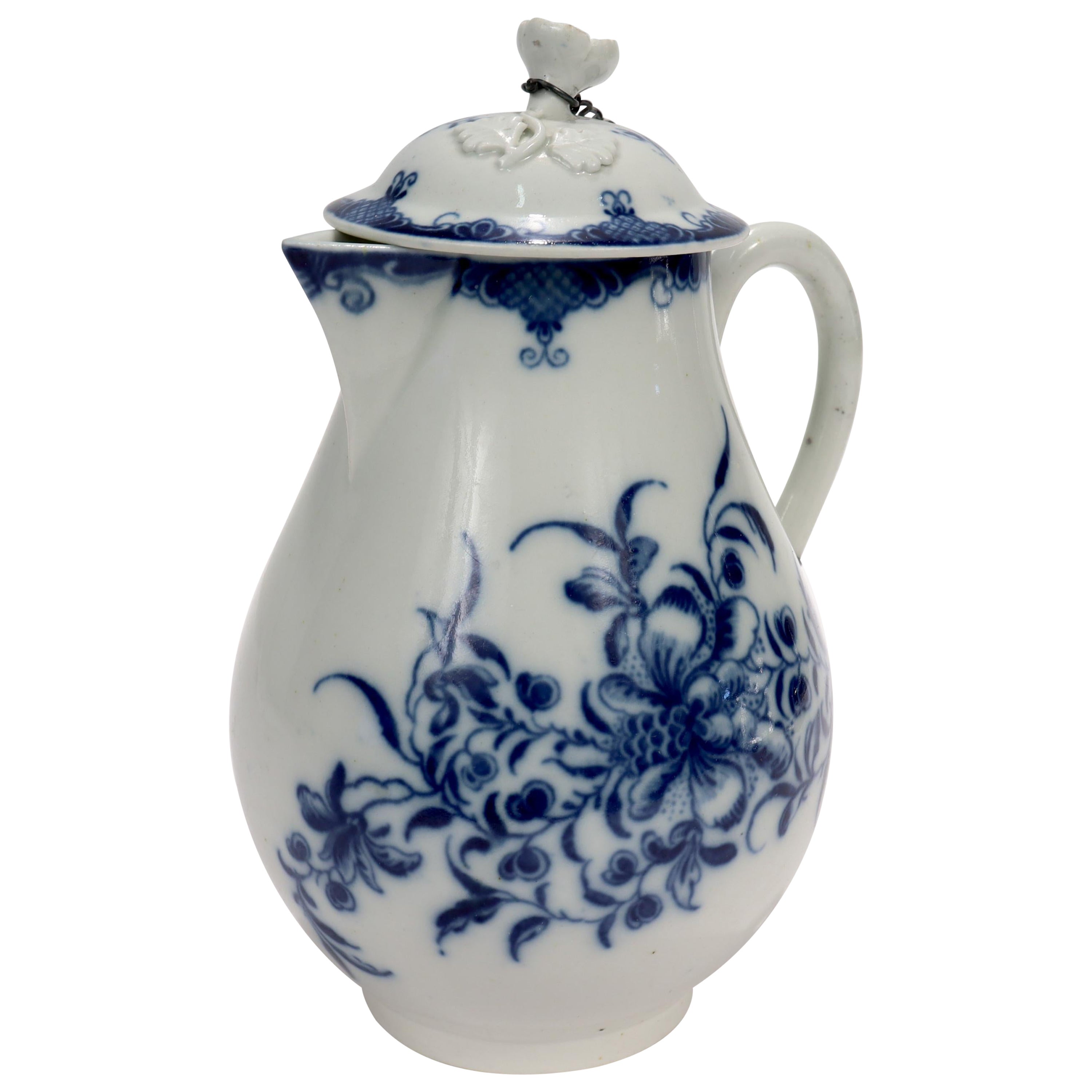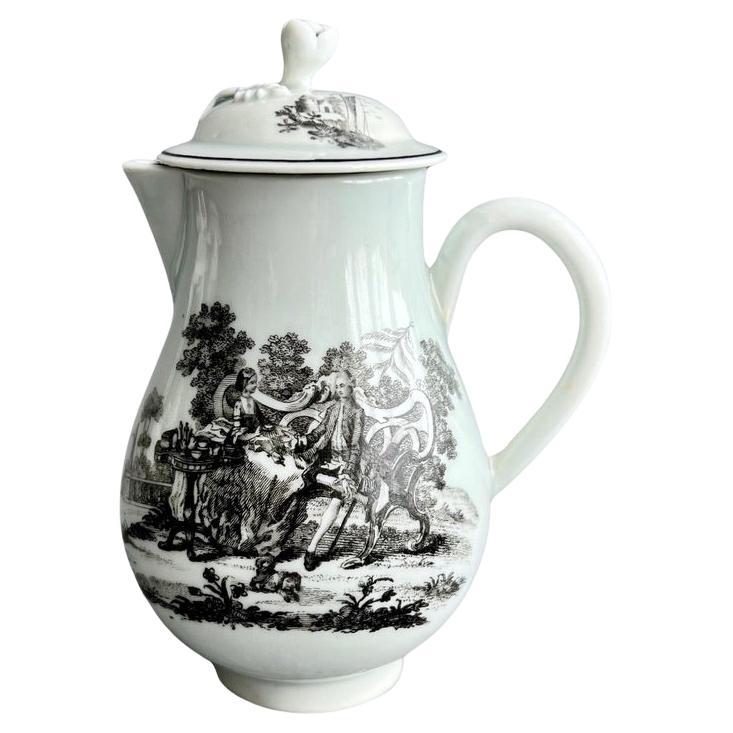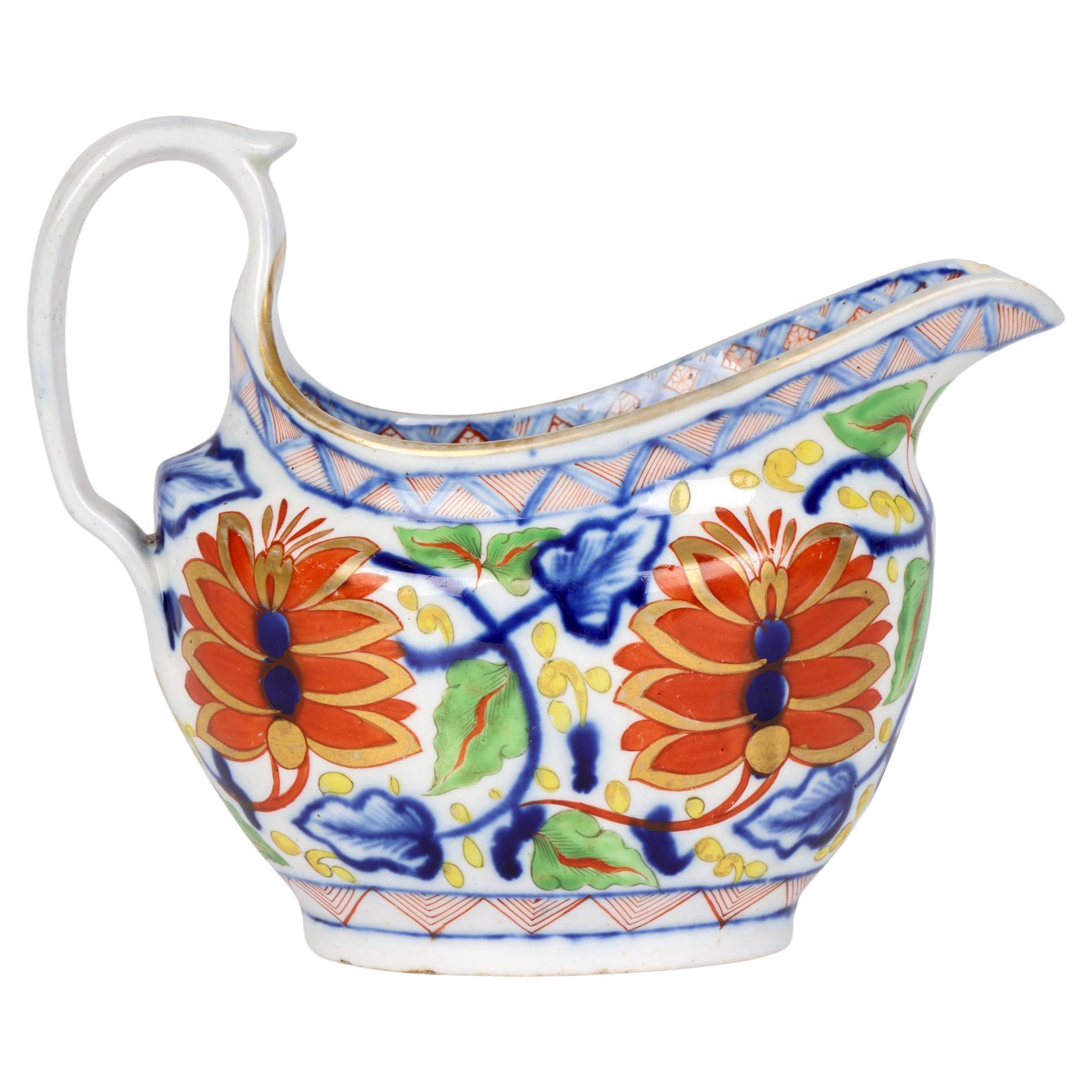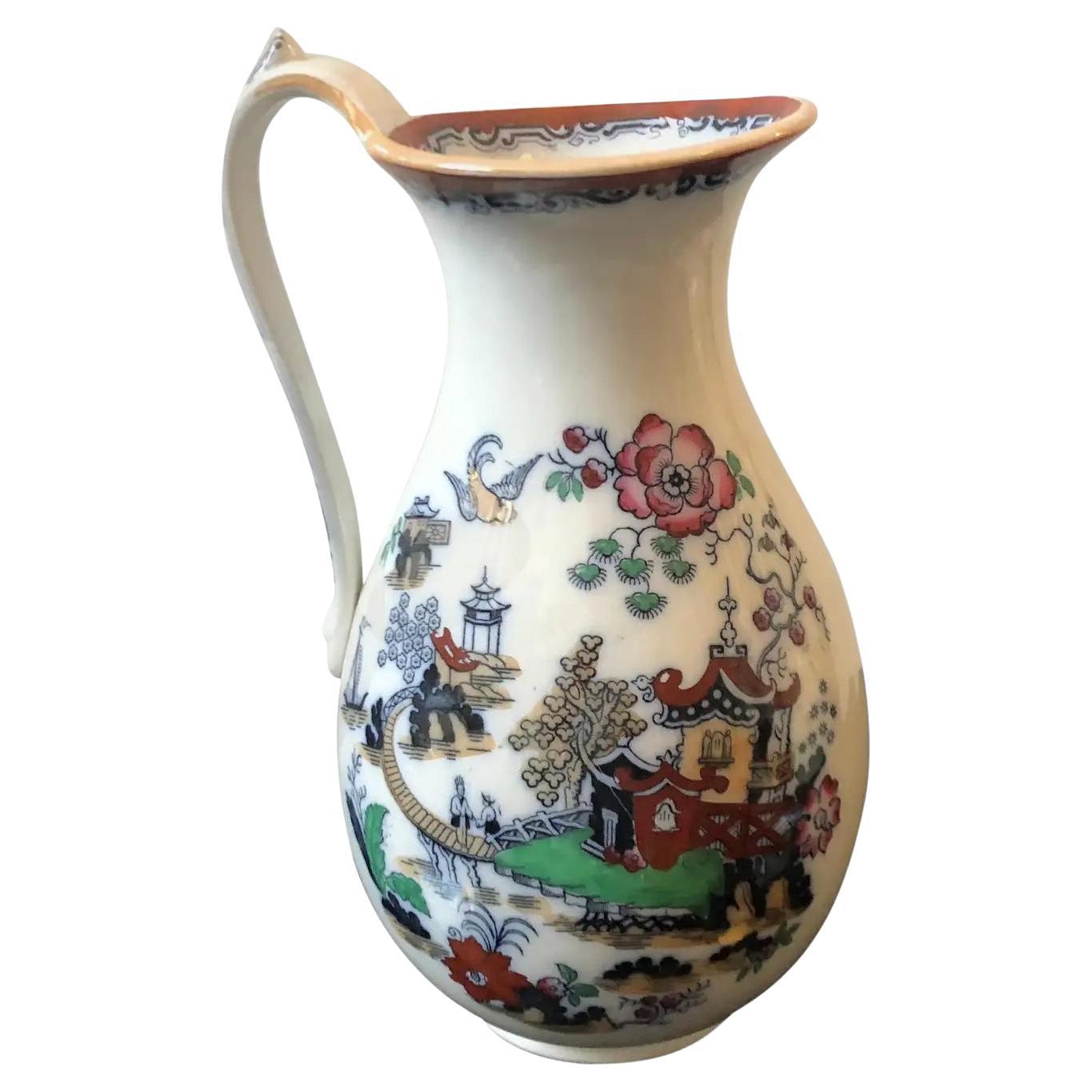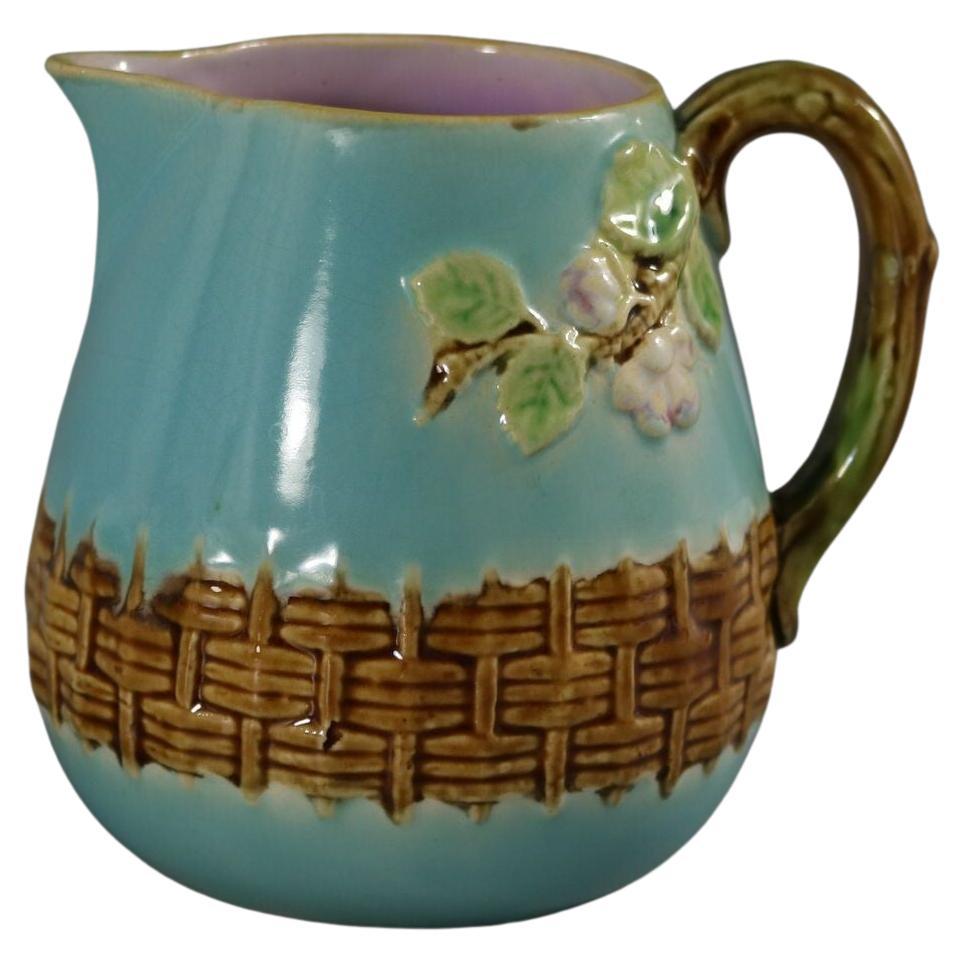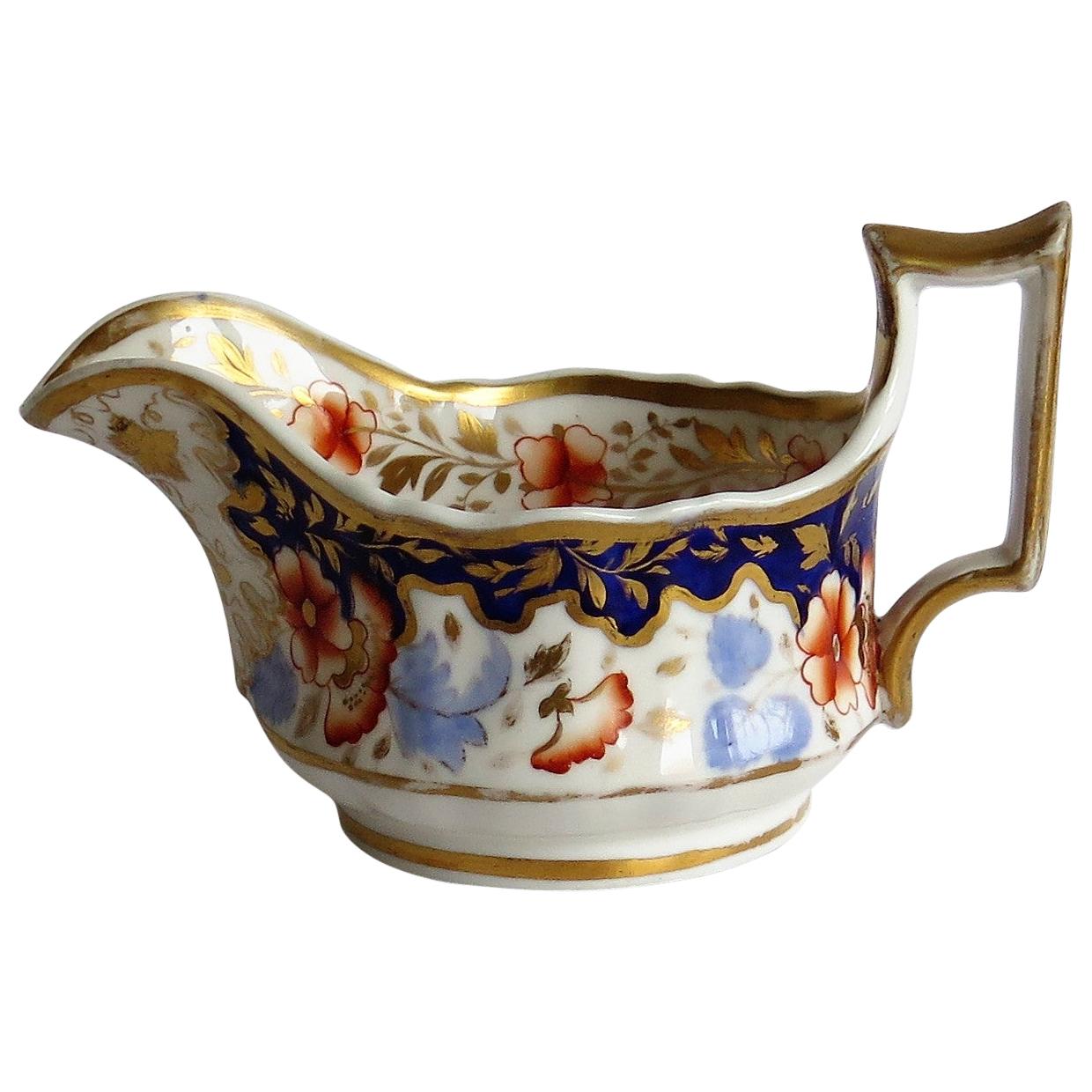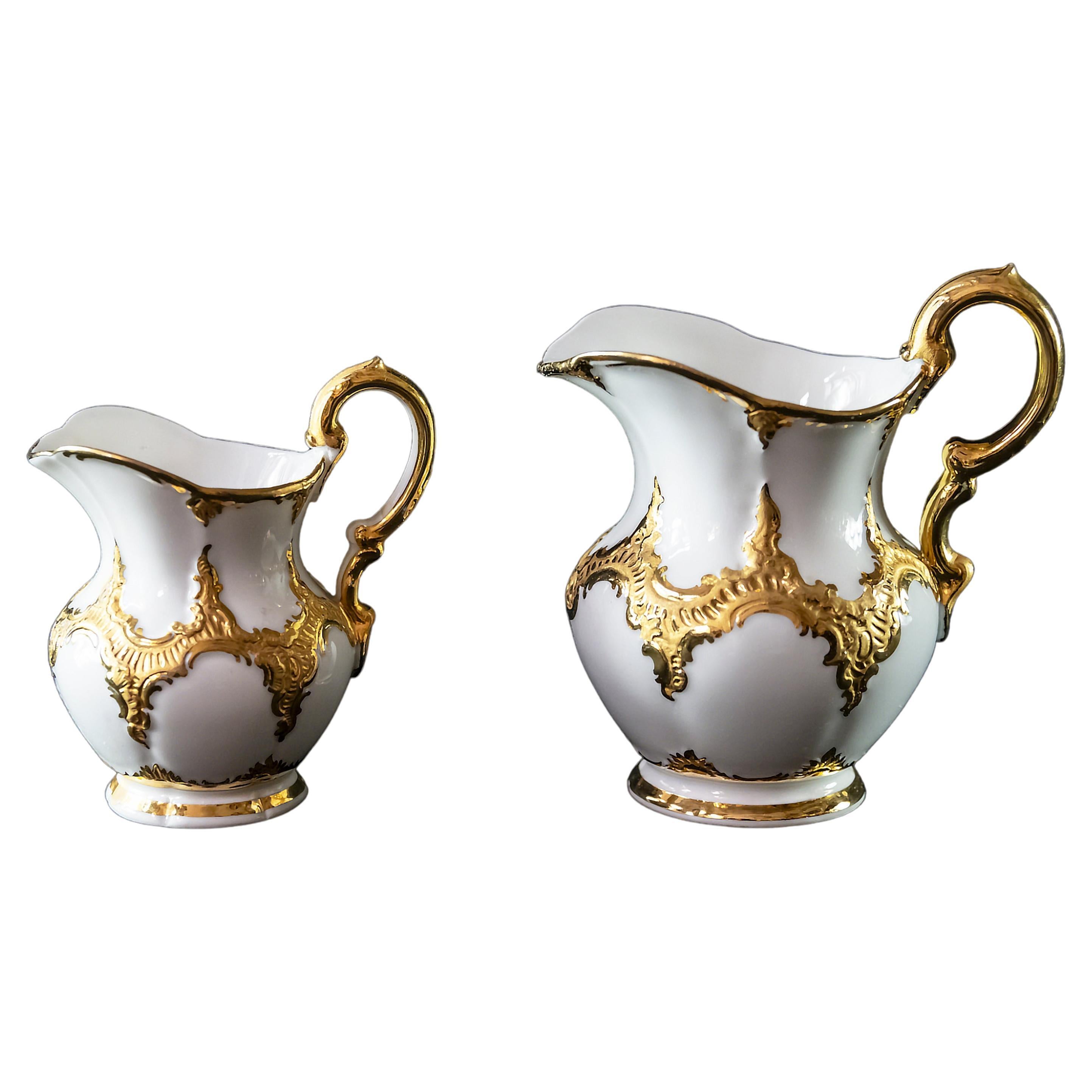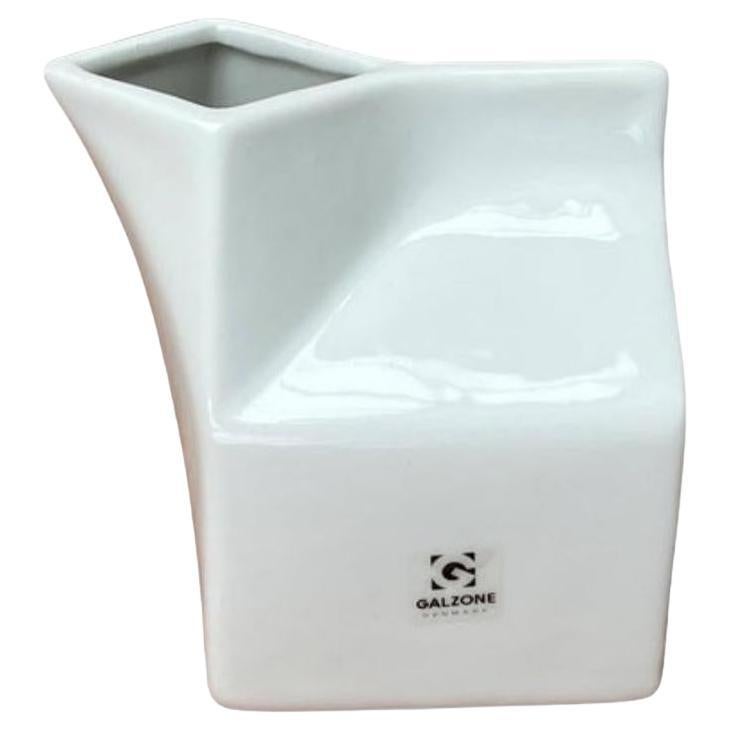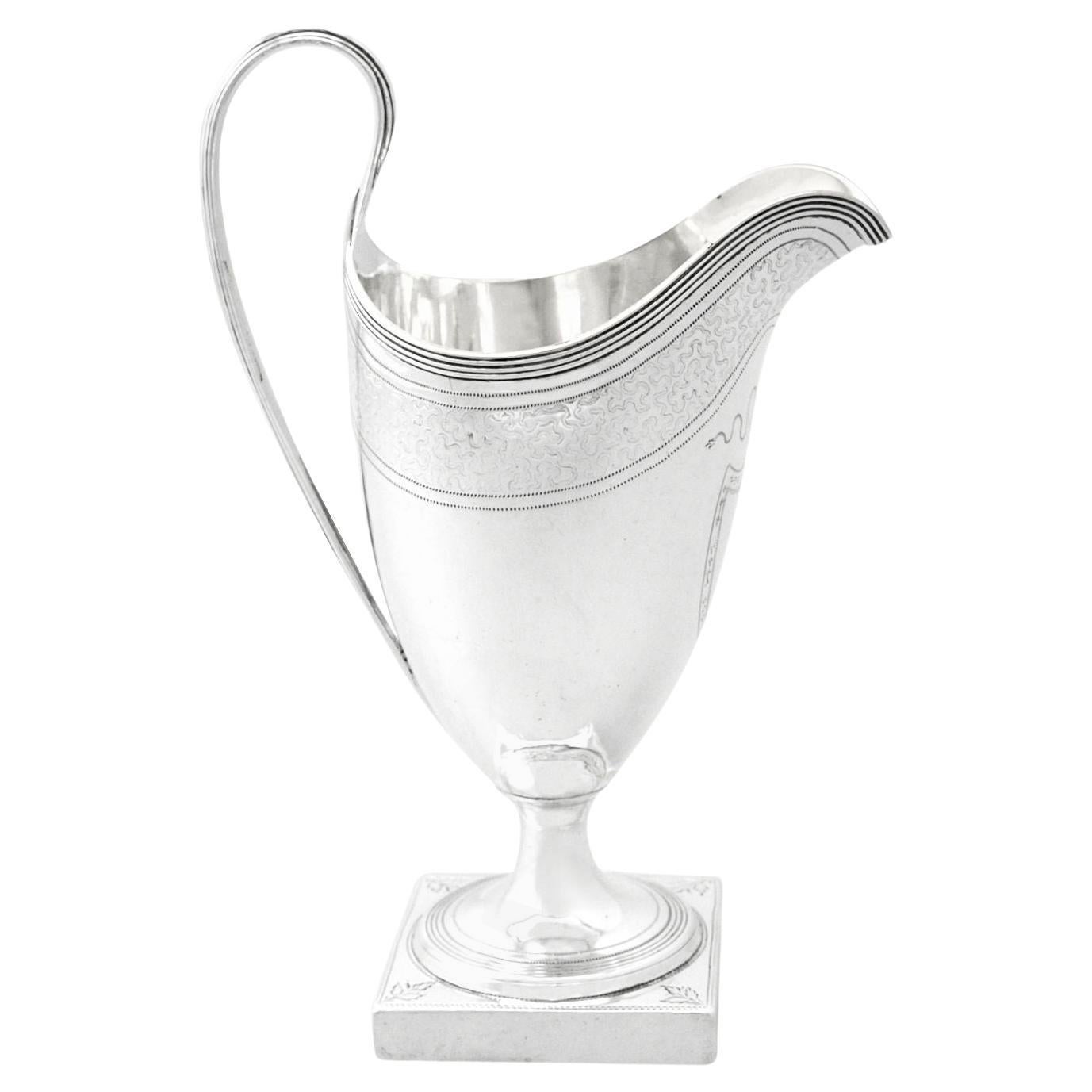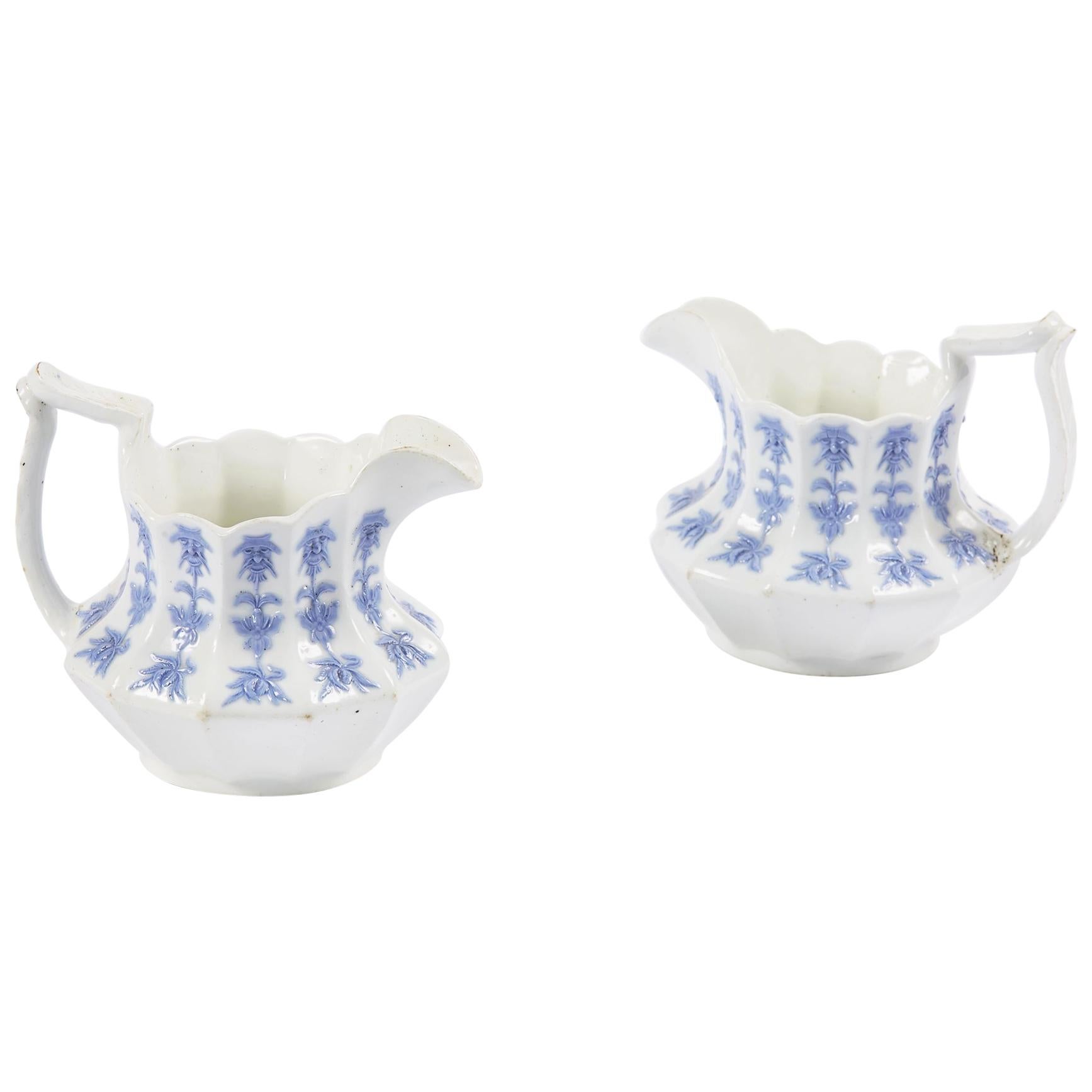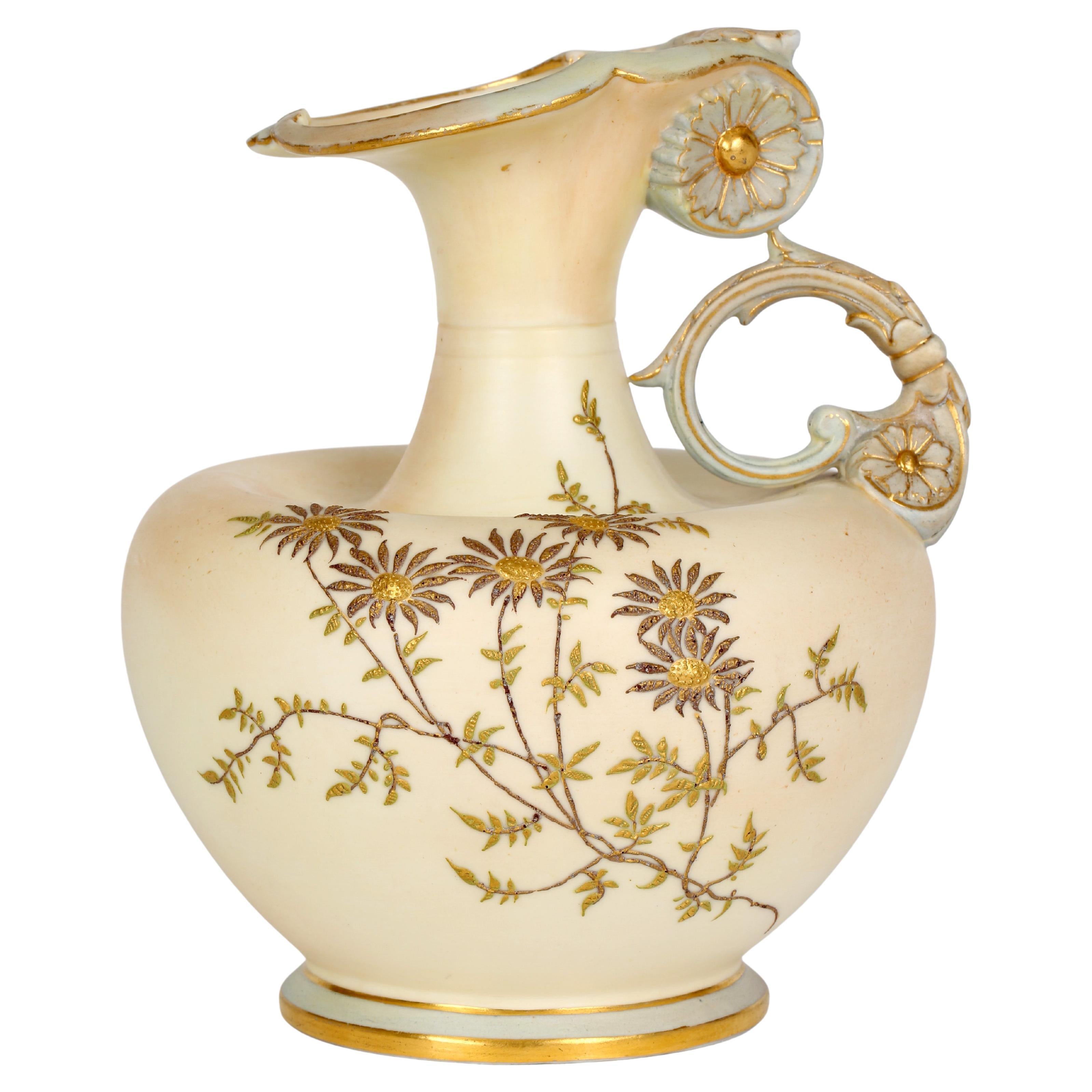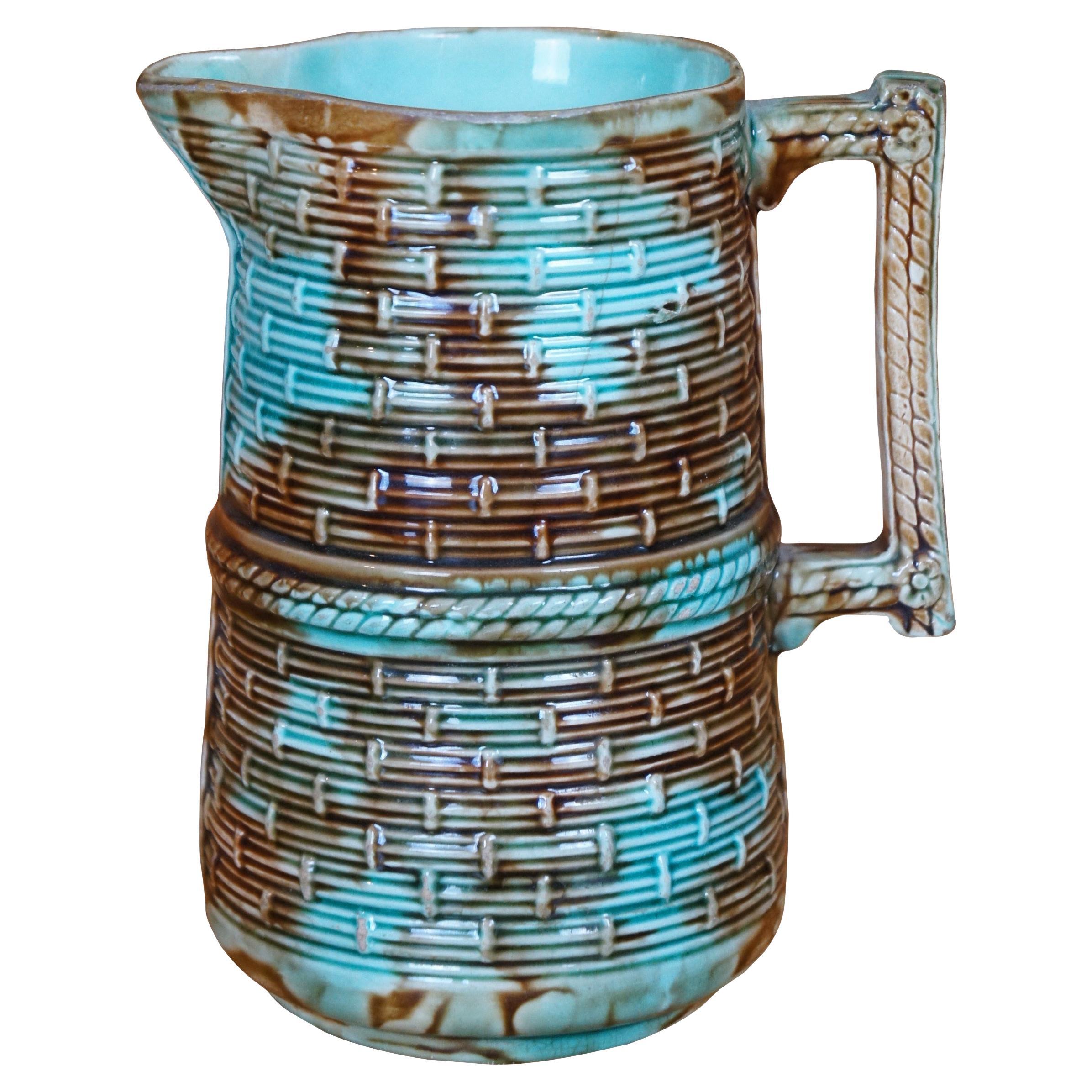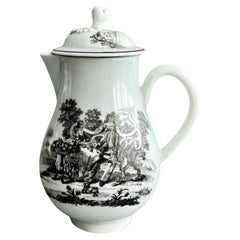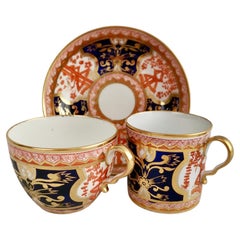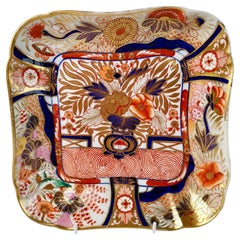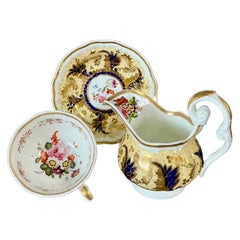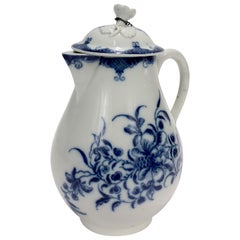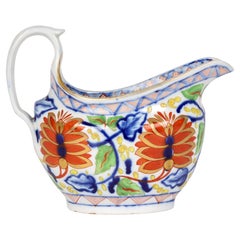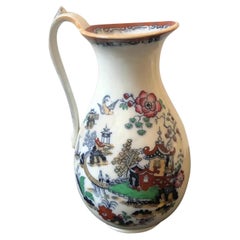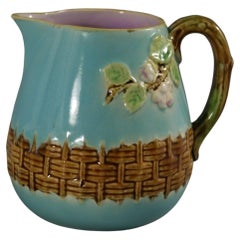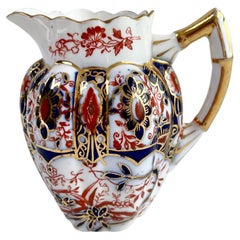
Wileman Milk Jug or Creamer, Japan Red & Blue Pattern Imari, Victorian 1890
View Similar Items
Want more images or videos?
Request additional images or videos from the seller
1 of 12
Wileman Milk Jug or Creamer, Japan Red & Blue Pattern Imari, Victorian 1890
Price:$90
About the Item
- Creator:Wileman (Maker)
- Dimensions:Height: 4.15 in (10.55 cm)Width: 4.5 in (11.43 cm)Depth: 3.25 in (8.26 cm)
- Style:Victorian (Of the Period)
- Materials and Techniques:
- Place of Origin:
- Period:
- Date of Manufacture:1890
- Condition:Wear consistent with age and use. In excellent antique condition without any damage or repairs and minimal rubbing. Some fine crazing.
- Seller Location:London, GB
- Reference Number:Seller: A-WIL149b1stDibs: LU4805132637212
About the Seller
5.0
Gold Seller
Premium sellers maintaining a 4.3+ rating and 24-hour response times
Established in 2016
1stDibs seller since 2019
225 sales on 1stDibs
Authenticity Guarantee
In the unlikely event there’s an issue with an item’s authenticity, contact us within 1 year for a full refund. DetailsMoney-Back Guarantee
If your item is not as described, is damaged in transit, or does not arrive, contact us within 7 days for a full refund. Details24-Hour Cancellation
You have a 24-hour grace period in which to reconsider your purchase, with no questions asked.Vetted Professional Sellers
Our world-class sellers must adhere to strict standards for service and quality, maintaining the integrity of our listings.Price-Match Guarantee
If you find that a seller listed the same item for a lower price elsewhere, we’ll match it.Trusted Global Delivery
Our best-in-class carrier network provides specialized shipping options worldwide, including custom delivery.More From This Seller
View AllWorcester Milk Jug and Cover, Creamer, Monochrome Print Tea Party no.2, ca 1760
By 1st Period Worcester Dr. Wall
Located in London, GB
This is a very charming milk jug with cover made by Worcester in their First Period (sometimes called the Dr Wall Period) in about 1760. The items are decorated in a black overglaze ...
Category
Antique 1760s English George III Porcelain
Materials
Porcelain
$416 Sale Price / set
20% Off
Free Shipping
Spode Porcelain Teacup Trio, Red Imari Dollar Pattern, Regency, ca 1810
By Spode
Located in London, GB
This is a beautiful orphaned teacup made by Spode in about 1810. It bears a lavish Japanese-inspired Imari pattern.
Spode was the great pioneer among the Georgian potters in England. Around the year 1800 he perfected the bone china recipe that has been used by British potters ever since, and he was also the leading potter behind the technique of transferware, making it possible for English potters to replace the Chinese export china, which had come to an end around that time, with their own designs. This was fundamental to a thriving industry that would last for about 150 years and provide half the world with their tableware. Spode porcelain is regarded as one of the highest quality porcelains around; for a soft-paste porcelain it is surprisingly hard and fine, and has a wonderful bright white colour.
The pattern on this can is called "Dollar" pattern, a very famous pattern that was used by English potters in the 18th and early 19th Century. It is obvious why it is called “dollar” - but its origin is less obvious! It is thought that this pattern was derived from a very old Chinese pattern depicting a tree with elaborate foliage that hides a Chinese character representing longevity or happiness. Traditionally, this went with a an image called “Taotie”, which was used on very ancient bronze vases...
Category
Antique Early 1800s English Regency Porcelain
Materials
Porcelain
$420 Sale Price / set
20% Off
Free Shipping
Chamberlains Worcester Porcelain Dish, Nelson or Fine Old Japan pattern, ca 1805
By Chamberlains Worcester
Located in London, GB
This is a striking square serving dish made by Chamberlains in Worcester around 1805. The dish bears the Fine Old Japan pattern, often called the Nelson pattern.
Robert Chamberlai...
Category
Antique Early 1800s English Georgian Serving Bowls
Materials
Porcelain
$700 Sale Price
24% Off
Free Shipping
Samuel Alcock Teacup and Milk Jug, Pale Yellow, Gilt and Flowers, ca 1824
By Samuel Alcock & Co.
Located in London, GB
A teacup and saucer with milk jug in the “melted snow” shape with double drop handles, pale yellow ground with rich gilt and cobalt blue acanthus pattern and finely painted flower re...
Category
Antique 1820s English Regency Tea Sets
Materials
Porcelain
$496 Sale Price / set
20% Off
Free Shipping
Pinxton Tea Service, Monochrome Orange Japanese Style Blood & Milk, ca 1800
By William Billingsly
Located in London, GB
Any porcelain made at the Pinxton porcelain factory is rare, but to find a complete tea service is even rarer! This wonderful service was made around...
Category
Antique Early 1800s English Georgian Porcelain
Materials
Porcelain
$4,200 Sale Price / set
20% Off
Free Shipping
Belleek Cabaret Tea Set for Two, Cream Grass Pattern, Victorian 1863-1891
By Belleek Pottery Ltd.
Located in London, GB
This is a beautiful and very rare Belleek cabaret set in the Grass design, consisting of a teapot, two teacups and saucers, a milk jug and a lidded sugar bowl, all placed on a large tray. All items carry the 1st Black Mark, which was used between 1863 and 1891.
It is extremely rare to come across an entire cabaret set of these antique items, particularly when in such fabulous condition, so this is a rare opportunity!
If you ever thought Belleek fine china looks, sounds and feels unique, you are right. There is a back story to this extraordinarily fine Irish eggshell porcelain, which has an unusually high amount of "frit" and therefore is thinner and finer than any other china.
Pottery in Belleek (in the now Northern-Irish area of Fermanagh) had started in 1849 with John Caldwell Bloomfield, who was a wealthy land owner. During the Irish famine...
Category
Antique Late 19th Century Northern Irish Victorian Tea Sets
Materials
Porcelain
$3,480 Sale Price / set
20% Off
You May Also Like
Antique English Caughley Porcelain Milk Pitcher or Jug
By Caughley Porcelain
Located in Philadelphia, PA
A fine antique English porcelain milk pitcher or jug.
Comprising the pot, a conforming lid, and a later associated chain connecting the two.
With blue underglaze decoration of...
Category
Early 20th Century English Georgian Pitchers
Materials
Porcelain
English Porcelain London Shape Imari Painted Jug
By Coalport Porcelain
Located in Bishop's Stortford, Hertfordshire
A fine quality antique English porcelain, possibly Coalport, London shape sauce jug decorated in an Imari pattern and dating from around 1810. The sauce jug is lightly potted and is ...
Category
Antique Early 19th Century English George III Pitchers
Materials
Porcelain
1870, Victorian British Orientalist Porcelain Jug
By A.H. Davenport
Located in Catania, Sicilia
It's a large polychrome porcelain orientalist jug, signed B.T.F.C. on the bottom. Made in England in 1870.
Category
Antique Late 19th Century English Victorian Porcelain
Materials
Porcelain
George Jones Blossom Milk Jug Creamer
By George Jones
Located in Chelmsford, Essex
George Jones Majolica jug/creamer which features a branch handle, with blossom branching off on either side and a basket weave border to bottom. Colouration: turquoise, brown, green,...
Category
Antique 1870s Pitchers
Materials
Majolica
Ridgway Porcelain Milk Jug or Creamer Pattern 2/1005, Regency Period, circa 1825
By J & W Ridgway
Located in Lincoln, Lincolnshire
This is a very decorative, porcelain milk jug or creamer in the early Grecian shape, made by John and William Ridgway, of Shelton, Hanley, Staffordshire Potteries, England, dating to...
Category
Antique Early 19th Century English Regency Ceramics
Materials
Porcelain
$269 Sale Price
20% Off
Set of 2 pcs. German Meissen Porcelain Cream and Milk Pitchers / Jugs
By Meissen Porcelain
Located in Vilnius, LT
Set of 2 pcs. of German Meissen porcelain cream and milk pitchers / jugs.
Porcelain is white, glazes and hand painted with rich gold decor.
The logo marked on the bottoms.
Dimensions...
Category
Mid-20th Century German Porcelain
Materials
Gold
Recently Viewed
View AllMore Ways To Browse
Chinese Porcelain Pitcher
Victorian Flow Blue
Antique Milk Pitchers
Antique Japanese Pitchers
Antique Milk Creamers
Shelley England
Flow Blue Tea
Small Green Creamer Pitcher
Imari Jug
Flow Blue Tea Cup And Saucer Set
Shelley Tea Set
Antique Foley China
Flow Blue Pitcher
Shelley Cup And Saucer
Shelley Cup
Shelley China
Shelley Bone China
Wileman Foley
